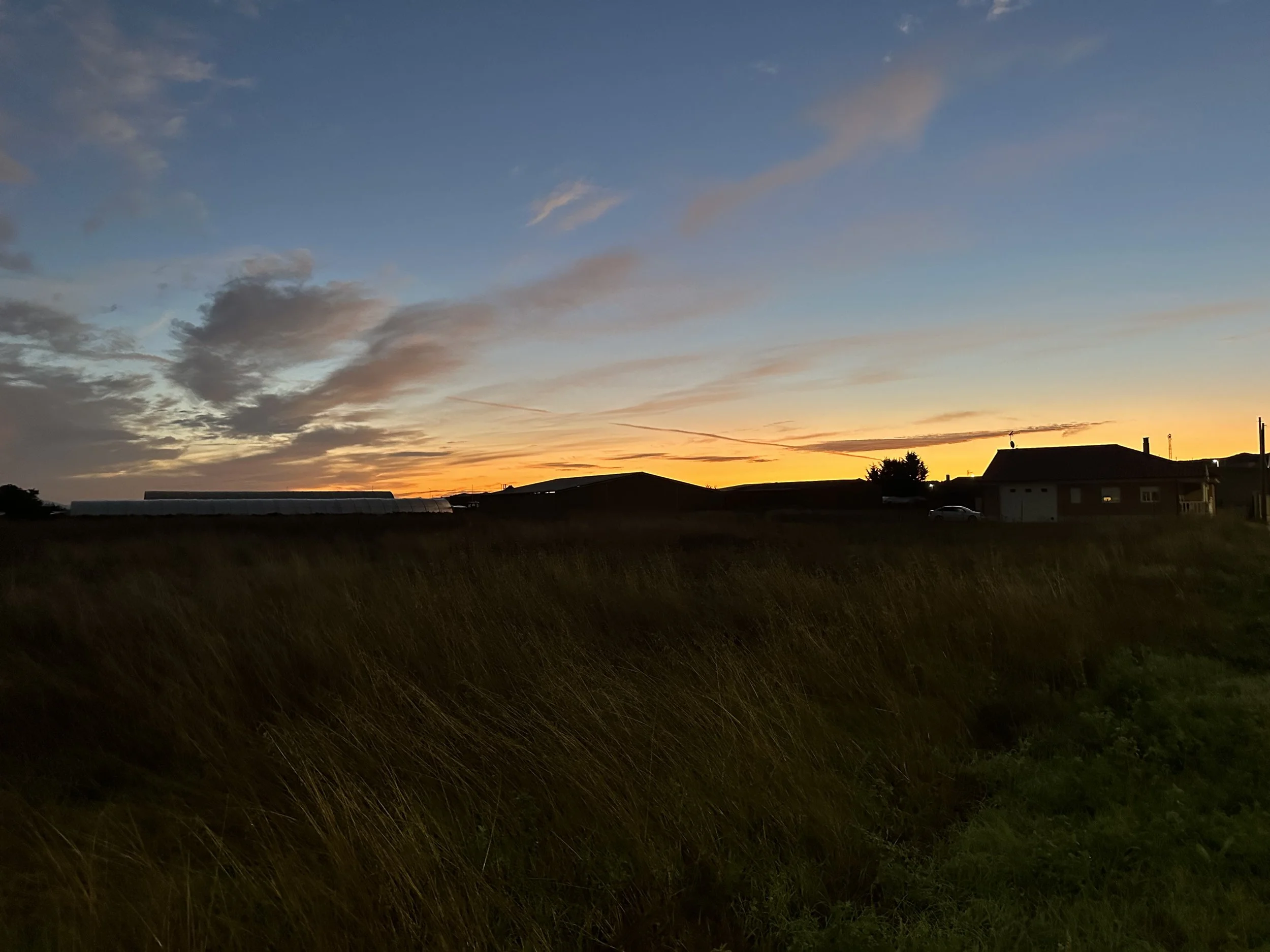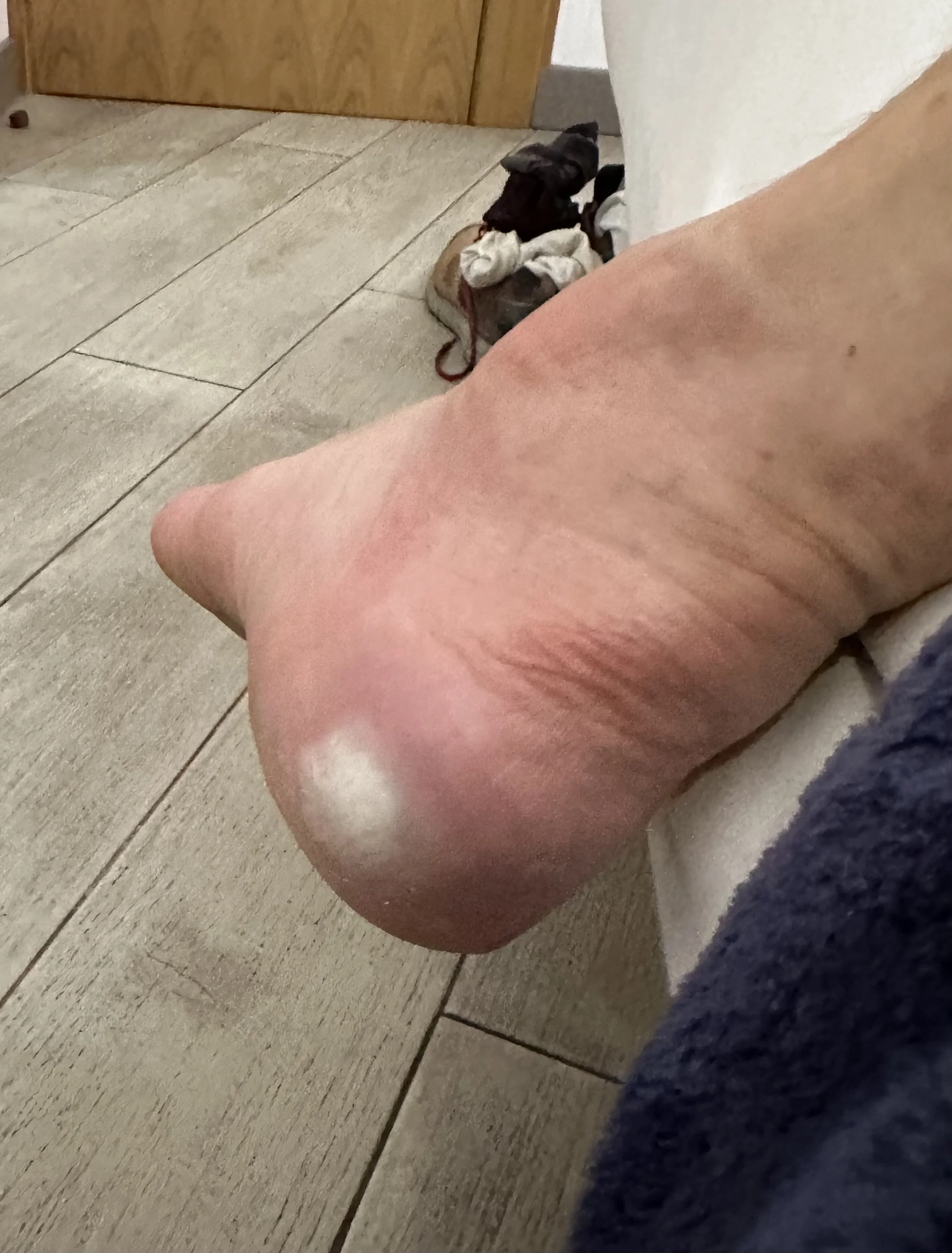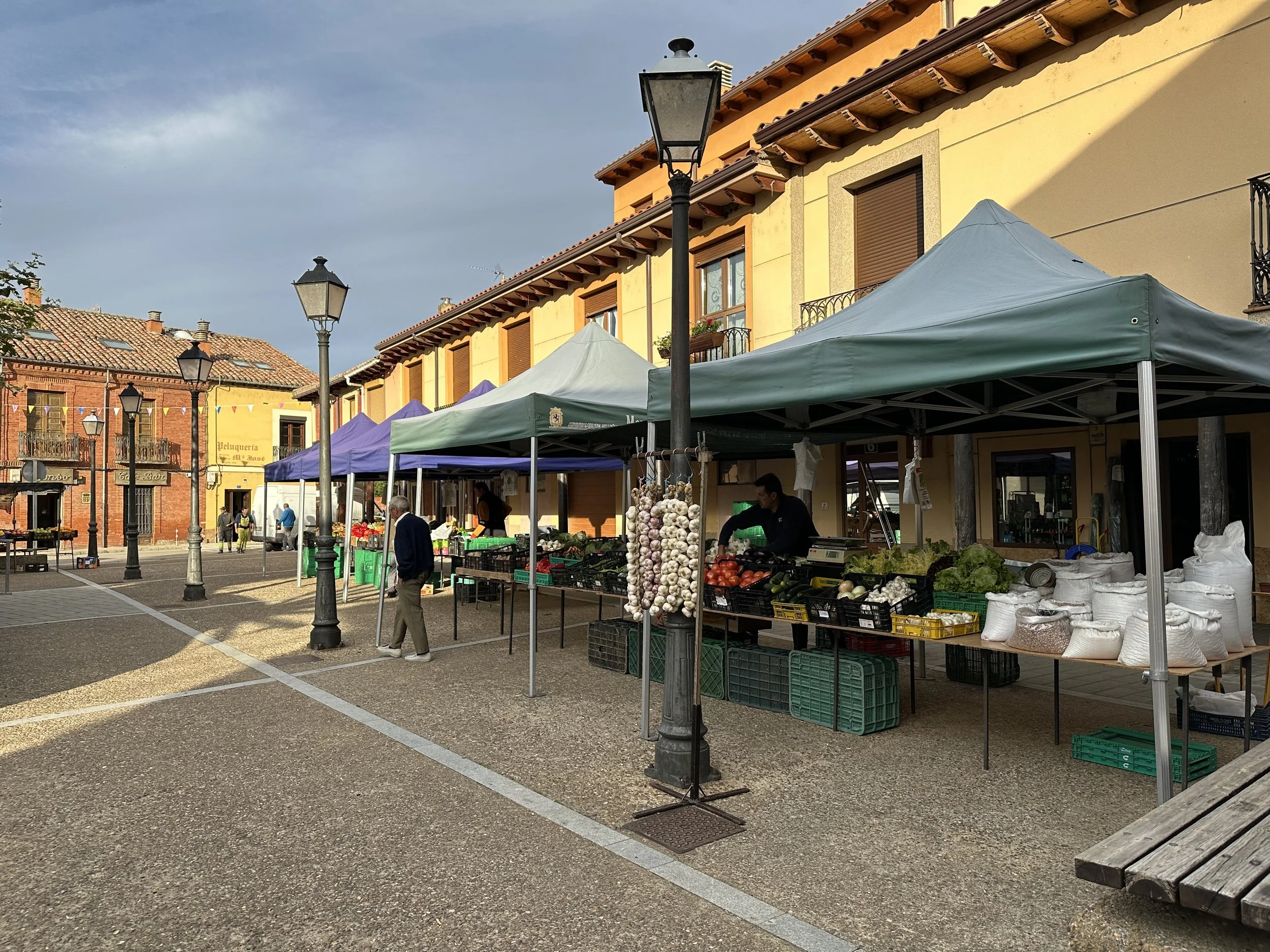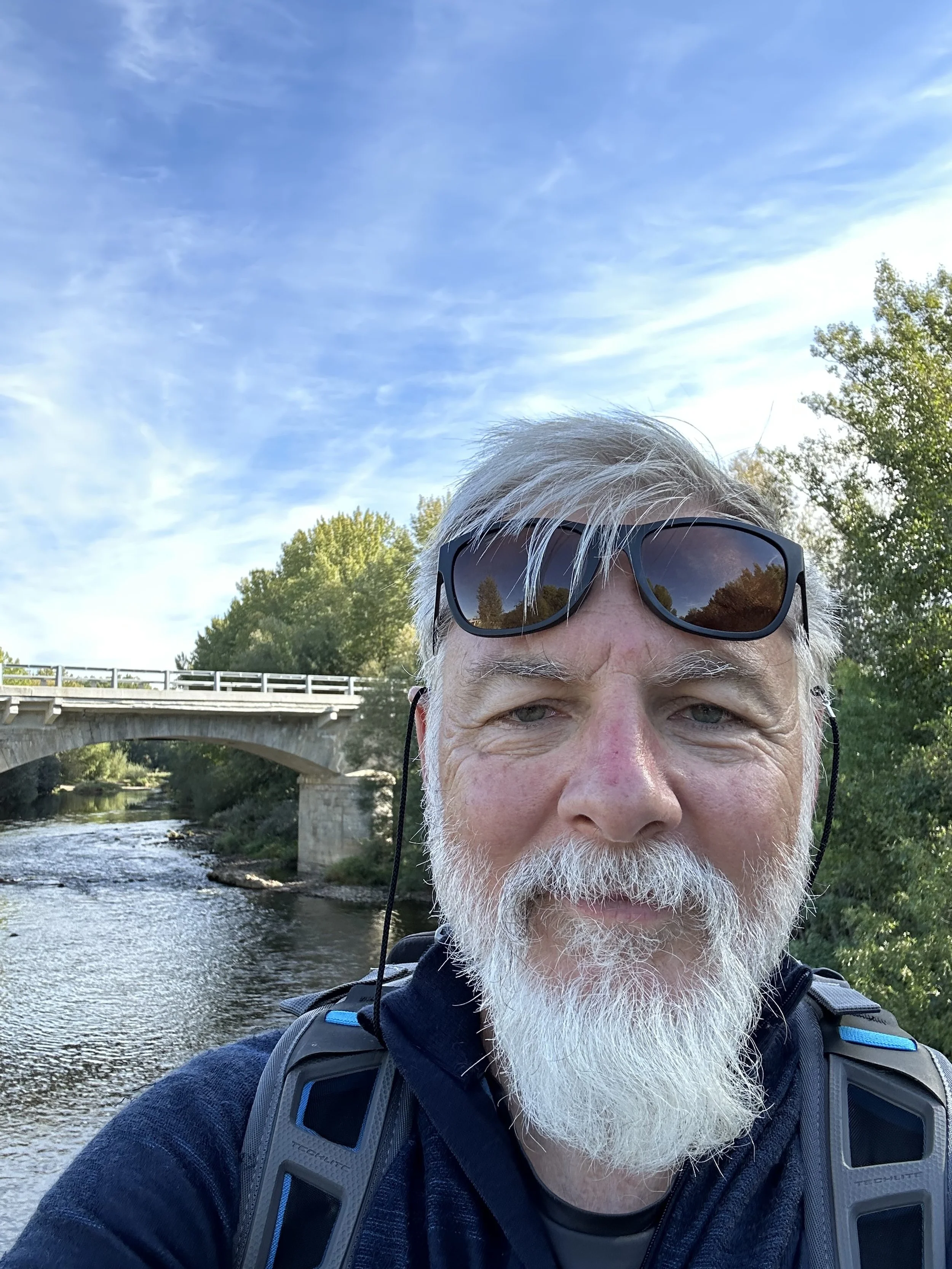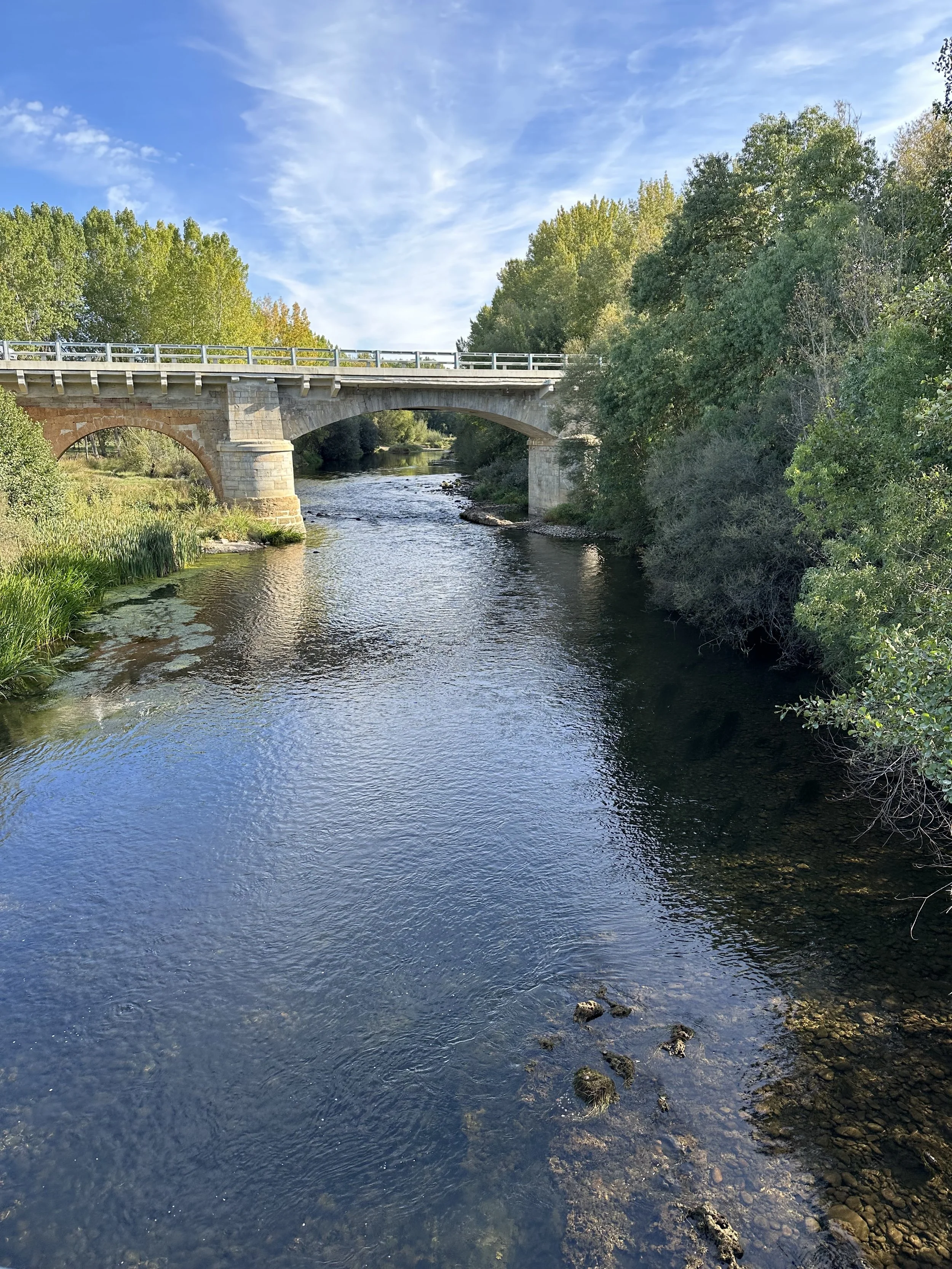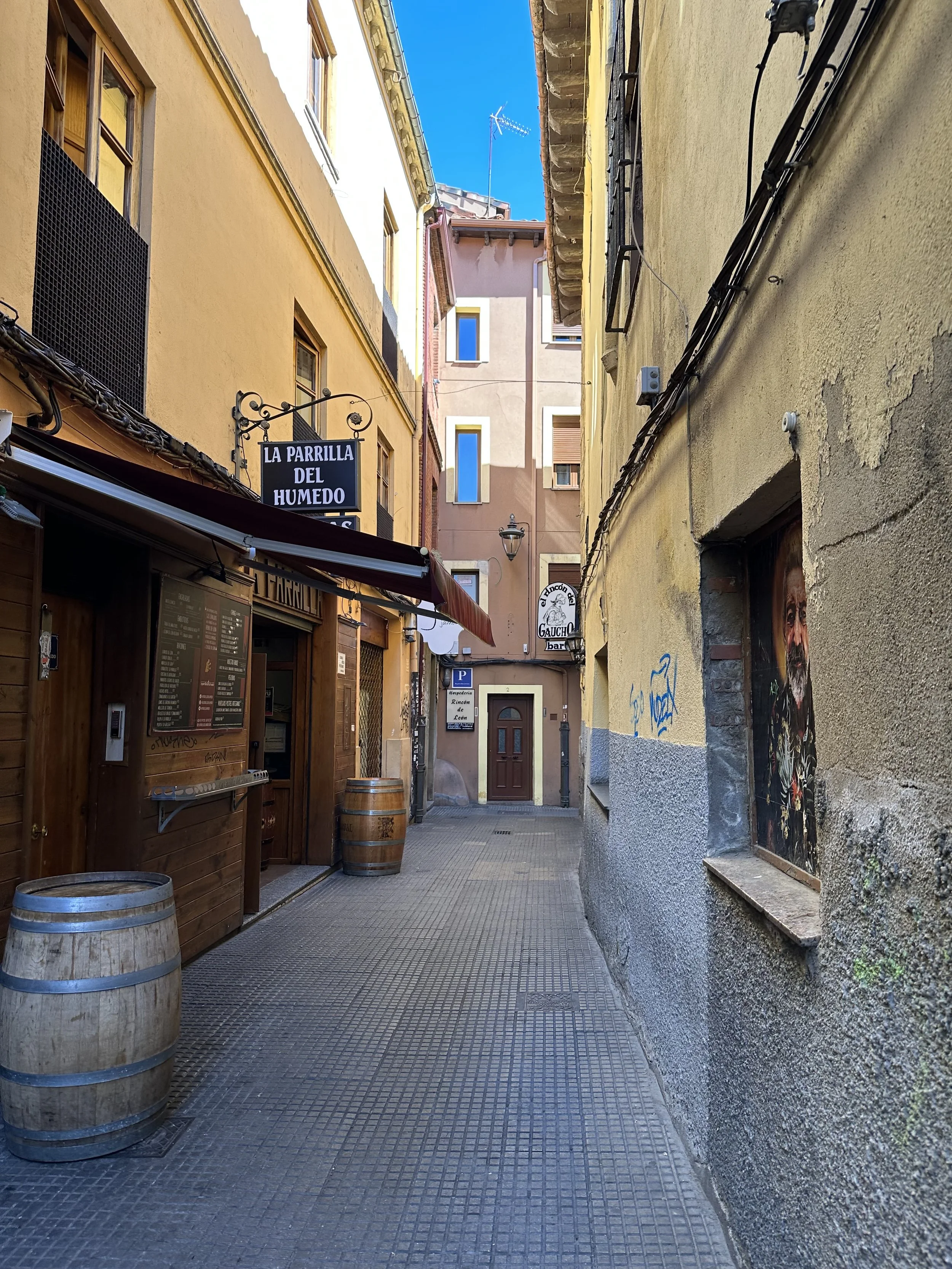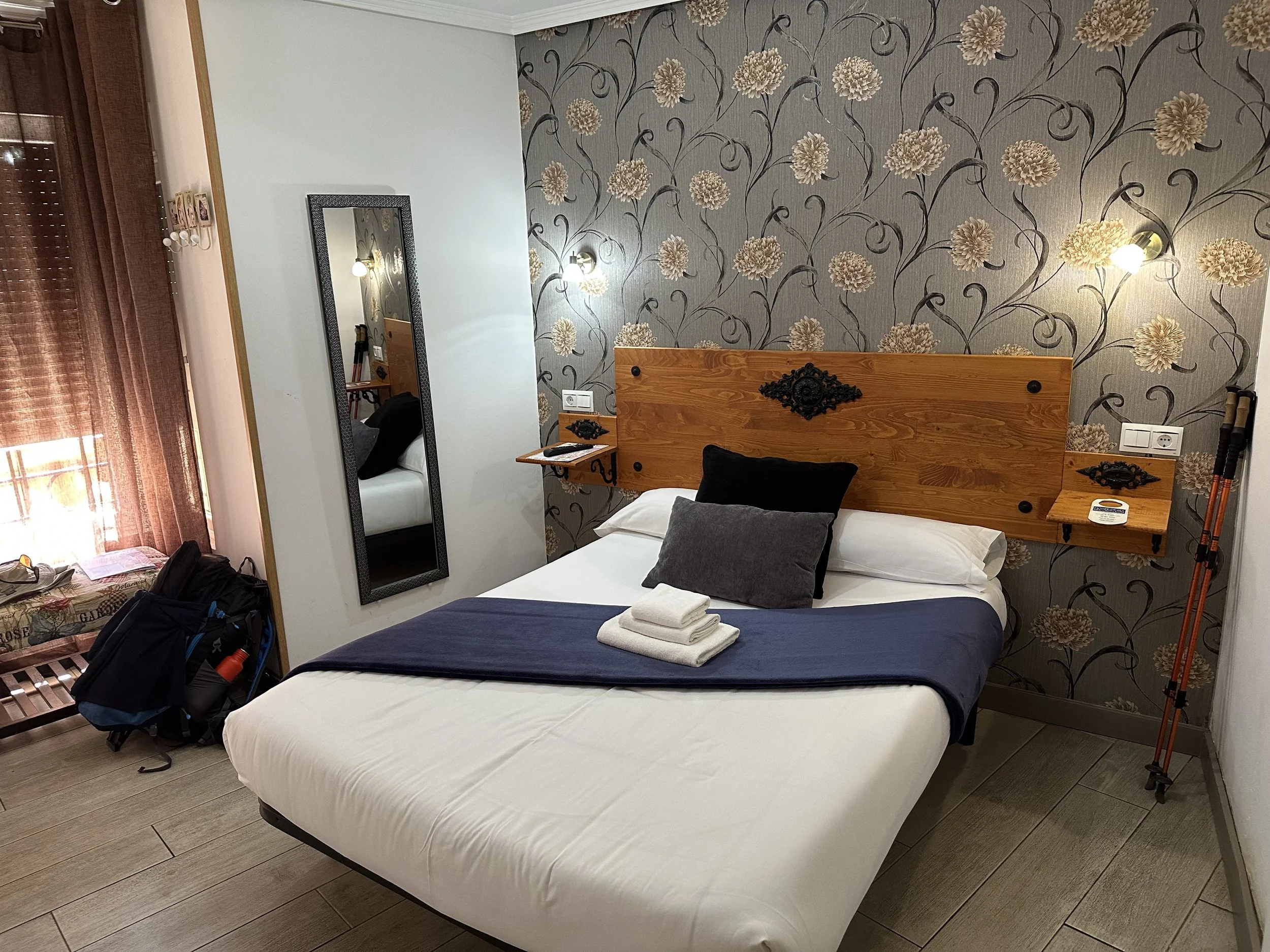Whispers from the Camino—Day 22
September 26 Reliegos to Leon 25.3 km
Starting before sunrise out of Reliegos
I was really looking forward to getting to the large city of Leon with a population of about 125,000 people. Actually, it wasn’t the city itself. After three full weeks on the Camino I was planning my first full rest day. I had walked a handful of shorter days—less than 15 kilometers as I listened to my body and the condition of my rehabbing leg. But I hadn’t actually stopped for one full day.
I was partly tired after the more than 30 kilometer push from Sahagun the day before. But the bigger reason was that the minor blister that I thought might be forming days prior had blown up into a full blister on the back of my left foot. It was getting to the point where every step hurt and I couldn’t find a position in my shoe that would lessen the pain. A day off to care for my blister didn’t only seem wise; I didn’t have it in me to walk with that much pain.
Before the blister flared up too much, however, I was treated to the most glorious sunrise to greet my day. It started out with just a reddish hue over the horizon, but as the sun neared the eastern horizon and before it peaked over, its rays started radiating off the clouds in my view. The show just got better with every step. Every pilgrim was stopping in a moment of pure awe, oohing and aching and, of course, taking numerous pictures to capture the spontaneous glory.
The sunrise that made every pilgrim stop in a moment of awe, praise and prayer.
It was clear that I continued to work on issues of identity. The whole professional minister/spiritual pilgrim language was working on me. While I didn’t make a significant shift I found a little more clarifying language. I landed on this understanding: ?Being a professional minister was about my place in society. Being a spiritual pilgrim was about my identity in God.
You might wonder why this is such an internal wresting match for me. I think it has to do with the place of preaching and the pulpit in our Presbyterian churches. We have an assumption that when a pastor is preaching he or she is wresting with what the Word of God is to this particular congregation in this particular place at this particular time. I think when I preach I wear my spiritual pilgrim hat and when I attend to all the administrative duties and pastoral care of members, I slip over into my professional minister role.
Fruit and staples in Mansilla de las Mulas
I think I have spent most of my career assuming that the more I honor the spiritual pilgrim side of my character the better I will be as a pastor and preacher. But, I have discovered repeatedly that trying to marry those two has created an awkward tension in the church. As I walked the Camino it was becoming clearer that I needed to separate those two.
In fact, the separation between me and the Presbytery of the Cascades was rooted in this subtle conflict. I wanted to do a “prayer and fasting wilderness quest” in Death Valley in 2022 as one of my contracted study leaves. This was a no-brainer for me as Jesus himself had a habit of retreating to a mountain or the wilderness at critical moments in his ministry. But the presbytery did not see this as contributing to my professional development and did not approve the request. The difference between their view of church leadership and mine exposed irreconcilable assumptions which led to our our agreed upon separation.
The look after three weeks on the Camino.
I didn’t intend to use the Camino to work out the grief I felt out our mutual dissolution. But the fact of the matter was this wasn’t the first time that this happened in my ministry. I was finally coming to terms with the fact that being a professional minister and a spiritual pilgrim were two different things. I would need to learn to keep them separate if I wanted to continue to serve the Church professionally and avoid the frustration of having my deeper identity rejected.
But another interesting psychological development took place this day as well. This was my fourth pilgrimage. Over the previous decade or so, I had completed a 4,000-mile, 10-week cycling pilgrimage in 2011. I followed that with a pilgrimage I called “From Rome to Rumi” in 2014 as I cycled from the Vatican in Rome to Rumi’s Tomb in Konya, Turkey. The last pilgrimage was a short 80-mile, 1-week walk in the hills of Sonoma, California to the Pacific Ocean (Camino de Sonoma). The first two pilgrimages were completely solo. It was just me and the bike and thousands of miles ahead of me. It was exactly what I needed. I needed the solitude to work through various issues of grief, transition and loss in my personal and professional life.
But, on the Camino this time I was having a strange experience. I certainly was deeply absorbed in self-reflection and contemplation. But I also felt like I was almost going through the motions of the Camino. This was my fourth pilgrimage and even though it was in a new country and foreign culture, I sort of knew the experience of pilgrimage. I was walking, but I didn’t feel like I was fully engaged in the experience and with the people around me. I could feel a sadness that seemed to be weighing me down, even if only subtly.
What was missing? Why wasn’t I fully engaged in this once-in-a-lifetime experience. The words came to me fast. It was almost like my body and heart were waiting for me to ask the question. “I want to share this with somebody. I just don’t want to do this alone anymore.” “I just don’t want to do this alone anymore.” The words felt deep. Interestingly enough the book that emerged from my first pilgrimage was titled, “Alone: A 4,000-Mile Search for Belonging.”
I have an adventurous spirit and I have followed my passions to cycle some of the most challenging terrain in the world including reaching Mount Everest Base Camp in 2017. Now I was on a pilgrimage that my son liked to frame as my “little 500-mile walk across Spain.” But the luster had worn off. Something was missing and I knew exactly what it was. I wanted to share the experience with others or maybe one special other. I just didn’t want to be doing this all alone anymore. My whole body felt relief at naming this reality even though it did nothing to change the fact that I still had 305 kilometers as a solo pilgrim still to walk.
The Meseta was definitely doing its work. The long multi-day stretches of flat plains had pitched me into a place of radical self-honesty. I was coming to terms with the reality of my own life.
I dragged myself into Leon through an uninspiring industrial area of the city where the Camino followed a busy highway.
I reached my private room down a charming and narrow alley and up a spiral staircase and collapsed into a luxurious bed.

